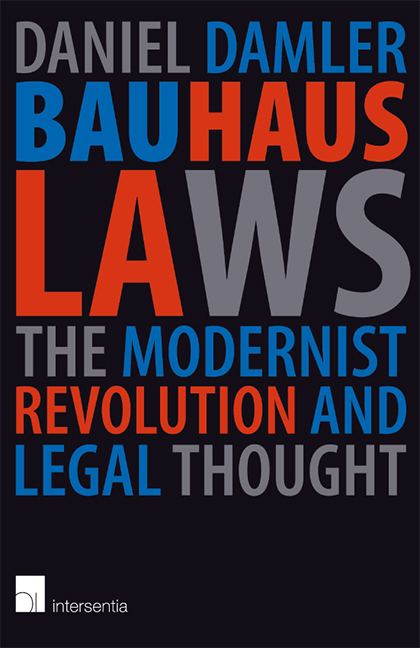Book contents
- Frontmatter
- Acknowledgements
- Contents
- Platonic Modernism: Introduction
- 1 Vienna 1900: Pure Legal Craftwork
- 2 Utopias Built with New Forms and Materials: Taut, Zamyatin, Le Corbusier
- 3 Hijacking Modernism: Bauhaus Values in the Third Reich
- 4 One-World Beauty: International Law and International Style
- 5 Regaining Sovereignty: “Transparency” in Postwar Germany
- Kandinsky's Laws: Epilogue
- About the Author
2 - Utopias Built with New Forms and Materials: Taut, Zamyatin, Le Corbusier
Published online by Cambridge University Press: 15 November 2019
- Frontmatter
- Acknowledgements
- Contents
- Platonic Modernism: Introduction
- 1 Vienna 1900: Pure Legal Craftwork
- 2 Utopias Built with New Forms and Materials: Taut, Zamyatin, Le Corbusier
- 3 Hijacking Modernism: Bauhaus Values in the Third Reich
- 4 One-World Beauty: International Law and International Style
- 5 Regaining Sovereignty: “Transparency” in Postwar Germany
- Kandinsky's Laws: Epilogue
- About the Author
Summary
If designing new lamps was coupled with the hope of making people happier and renewing society spiritually, it was only logical to apply the “modern style” to architecture, building entire cities that would herald the dawn of a new era and improve the lives of everyone living in them. There were indeed attempts to reinvent the city as a whole. On the surface, the urban visions of Bruno Taut and Le Corbusier were merely an ambitious form of town planning rather than utopias, but a closer reading of the accompanying texts shows that the creators of these projected cities imagined them as housing a completely new type of community. Though they may have been designed to deal with the housing needs of the present, once these new cities were inhabited a wholly new society was supposed to emerge. This is true of Bruno Taut's “City Crown” and Le Corbusier's “Radiant City,” though not of the third example under investigation here, Yevgeny Zamyatin's “One State” depicted in his novel We. The author was not an architect and had no practical experience as a city planner. Zamyatin's novel, moreover, was dystopian rather than utopian; his “One State” is hardly a cozy and meaningful place to live. And yet Zamyatin's city-state is useful in our deliberations, as its totalitarian character is largely thanks to architectural innovation.
BRUNO TAUT ‘ S CITY CROWN
The watershed years of 1918 – 19 saw the publication of a largely forgotten constitutional manifesto, forgotten because its signatories had no appreciable political power and hence no real influence on the postwar constitution of Germany. The platform of the “Political Council of Intellectual Workers” (Politischer Rat geistiger Arbeiter) is notable not only because its supporters included intellectuals of considerable repute such as Robert Musil, Heinrich Mann and jurist Hugo Sinzheimer, but also because it bears witness to the – from today's vantage point – rather absurd constitutional collage that was up for discussion at the time, and indeed was never entirely forgotten even after the ratification of the Weimar constitution, as evidenced by the events that transpired there 15 years later.
- Type
- Chapter
- Information
- Bauhaus LawsThe Modernist Revolution and Legal Thought, pp. 37 - 80Publisher: IntersentiaPrint publication year: 2019



